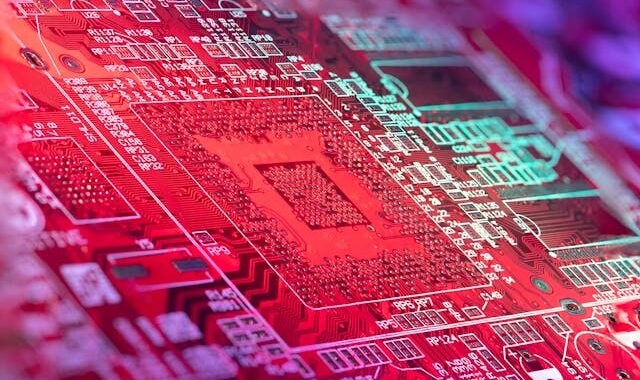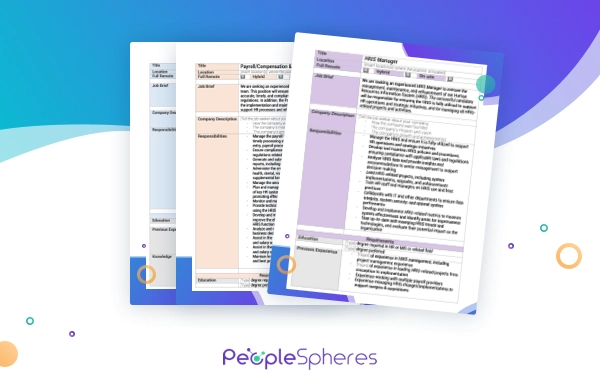
5 min
Bridging the Gaps in HR Systems with Smart Integrations and Tailored Solutions
Written by
HR teams face challenges managing multiple, often disconnected, HR systems impacting efficiency and agility. While the average HR team uses 9 to 11 different systems for functions like recruitment and payroll, only 26% of organizations have fully integrated systems. This lack of integration leads to fragmented data, rigid processes, and slower decision-making.
While digital tools are widespread, the true transformation lies in how well these tools communicate and adapt to evolving HR needs. Smart integrations and tailored solutions are emerging as the strategic fix—bridging operational gaps, enabling faster actions, and elevating employee experience through personalization and automation.
Related articles:
How to Mitigate the Risks of Using Outdated Legacy Systems
The Pros and Cons of Integrated HR Systems
Why Traditional HR Tools Are Not Enough
Most HR departments rely on multiple systems for different functions such as recruitment, onboarding, payroll, performance management, and compliance. But these systems often don’t talk to each other.
The result? HR professionals spend valuable time switching between platforms, duplicating data, and manually aligning processes. This fragmentation leads to inefficiencies, compliance risks, and poor employee experience.
Studies show that nearly 70% of HR leaders feel their current tools lack interoperability and flexibility, creating roadblocks in strategy execution.
What are Smart Integrations?
Smart integrations are the glue that connects your HR tools so they actually work together without the usual mess. Instead of juggling disparate data and systems, smart integrations let your tools share data, talk to each other, and trigger actions automatically.
That means no more manual updates across platforms or worrying about errors when something changes. When someone gets promoted, for example, every system updates instantly and correctly.
They’re called “smart” because they don’t just move data, they understand it. They adapt, scale with your business, and help create a smoother experience for both HR teams and employees.
How Smart Integrations Solves the Lack of Interoperability
Smart integrations enable seamless data exchange between platforms – whether it’s syncing your HRIS with your payroll software or connecting recruitment data with onboarding workflows.
With integrated systems, HR teams can:
- Eliminate duplicate data entry and reduce manual errors
- Gain a unified view of employee records and lifecycle events
- Automate tasks like approvals, policy updates, and access provisioning
- Connect HR tools with collaboration platforms like Teams or Slack for better communication
This means faster response times, reduced administrative workload, and more time to focus on employee engagement and strategy. Measure the ROI of and integrated HRIS by calculating the time savings and the cost savings that this reductions translates to.
One Size Doesn’t Fit All: The Need for Tailored HR Solutions
While integrations improve efficiency, tailored solutions take personalization a step further. Every organization has unique processes, policies, and needs. A generic HR tool may fall short of adapting to them.
Custom-built or tailored HR solutions can:
- Reflect your exact organizational structure and approval hierarchy
- Adapt to regional regulations and cultural expectations
- Provide employee dashboards and reports which can be customized for different roles
- Support hybrid and remote teams with flexible workflows
For example, a manufacturing company may need real-time attendance tracking integrated with shift-based payroll, while a SaaS company may prioritize AI-driven performance reviews and digital onboarding. Tailoring makes this possible. Radixweb, known for developing custom software for HR, highlights that organizations implementing tailored HR systems see up to 40% faster onboarding and significant improvements in compliance tracking and user adoption across departments.
Why Bridging These Gaps Matters Now
The workplace is undergoing rapid transformation. Remote-first models, hybrid setups, gig-based employment, and rising employee expectations have redefined the way HR teams operate. Employees now seek seamless digital experiences, personalized interactions, and timely access to information – regardless of where they work. At the same time, HR leaders face mounting pressure to maintain compliance, boost retention, and contribute to strategic business goals.
Disconnected systems simply can’t keep up with this pace of change. Manual work leads to slower response times, inconsistent employee experiences and engagement, and missed opportunities to act on valuable workforce data. That’s why bridging the gaps in HR systems through smart integrations and tailored platforms is no longer just a matter of operational efficiency, but of business resilience.
Investing in the right HR solutions for your business ensures your systems are not only integrated but also designed to reflect your unique workflows, compliance needs, and organizational goals. When platforms are interconnected and customized, organizations can automate routine tasks, act on real-time insights, and deliver consistent, high-impact employee experiences. A connected and intelligent HR ecosystem is both a competitive advantage and critical differentiator that empowers your people and accelerates growth.
Final Thoughts
Modern HR isn’t just about managing people, it’s about enabling people through smart systems. By unifying your HR tech stack and customizing it to fit your unique workflows, you empower your teams to deliver better experiences and faster outcomes.
It’s time to stop working around disconnected systems and start building one that works for you.




-640x380.jpg)
-1-640x380.jpg)